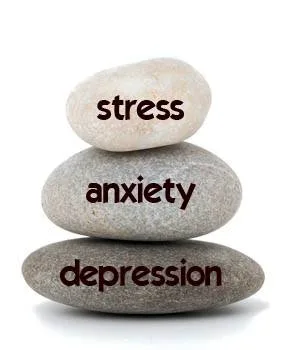Introduction:
Depression Anxiety Stress Scale
The Depression Anxiety Stress Scale (DASS) is a self-report questionnaire designed to measure the severity of symptoms related to depression, anxiety, and stress. It consists of three subscales, each containing 14 items, which assess the frequency and severity of these symptoms over the past week.
The DASS is widely used in research and clinical settings to assess emotional states and monitor changes over time.
The Depression Anxiety Stress Scale (DASS) is a widely used self-report instrument for measuring the severity of emotional states of depression, anxiety, and stress. Developed by Lovibond and Lovibond in 1995, the DASS is a set of three self-report scales designed to measure the negative emotional states of depression, anxiety, and stress.
The DASS has 42 items in total, with 14 items per scale. Each item is rated on a 4-point Likert scale ranging from 0 (did n outot apply to me at all) to 3 (applied to me very much, or most of the time). The scores for each scale are calculated by summing the scores for the relevant items, with higher scores indicating higher levels of depression, anxiety, or stress.
The DASS is considered to be a reliable and valid measure of the three emotional states it assesses. It has been widely used in research and clinical settings to assess the severity of these emotional states and to monitor changes in emotional states over time. One of the key advantages of the DASS is its ability to differentiate between depression, anxiety, and stress, which are often closely related but distinct emotional states.
This can be useful in clinical settings for accurately diagnosing and treating these conditions.The DASS has been translated into many languages and has been used in numerous studies around the world. It has been found to have good psychometric properties in a variety of populations, including clinical and non-clinical samples.
Here are some of the symptoms assessed by each scale:
Each of the three scales contains 14 items, and respondents rate the frequency or severity of each symptom over the past week on a scale from 0 (did not apply to me at all) to 3 (applied to me very much, or most of the time).
Depression Scale:

- 1. I felt down-hearted and blue.
- 2. I felt that life was meaningless.
- 3. I couldn’t seem to experience any positive feeling at all.
- 4. I found it difficult to work up the initiative to do things.
- 5. I felt that I had nothing to look forward to.
- 6. I felt I wasn’t worth much as a person.
- 7. I felt that I was rather touchy.
- 8. I was aware of the action of my heart in the absence of physical exertion.
- 9. I felt scared without any good reason.
- 10. I felt that I was close to panic.
- 11. I found it difficult to relax.
- 12. I felt that I was using a lot of nervous energy.
- 13. I felt that I was rather touchy.
- 14. I was intolerant of anything that kept me from getting on with what I was doing.
Anxiety Scale:

- 1. I was aware of of my mouth.
- 2. I experienced breathing difficulty (e.g., excessively rapid breathing, breathlessness in absence of physical exertion).
- 3. I experienced trembling (e.g., in the hands).
- 4. I was worried about situations in which I might panic and make a fool of myself.
- 5. I felt that I was close to panic.
- 6. I felt scared without any good reason.
- 7. I felt that life was meaningless.
- 8. I found it difficult to work up the initiative to do things.
- 9. I felt down-hearted and blue.10. I found it difficult to relax.
- 11. I felt that I had nothing to look forward to.
- 12. I felt that I wasn’t worth much as a person.
- 13. I felt that I was rather touchy.
- 14. I was aware of the action of my heart in the absence of physical exertion.
Stress Scale:

- 1. I found it difficult to wind down.
- 2. I found myself getting agitated.
- 3. I found it difficult to relax.
- 4. I felt that I was using a lot of nervous energy.
- 5. I felt that I was pretty irritable.
- 6. I found it hard to calm down after something upset me.
- 7. I was intolerant of anything that kept me from getting on with what I was doing.
- 8. I felt that I was rather touchy.
- 9. I felt that I was under constant strain.
- 10. I found it difficult to work up the initiative to do things.
- 11. I felt that I was not making progress at the things which are important to me.
- 12. I felt that I was unable to cope with things.
- 13. I felt that I was not handling things well.
- 14. I felt that I was close to panic.
Treatment:
The Depression Anxiety Stress Scale (DASS) is primarily a diagnostic tool used to assess the severity of symptoms related to depression, anxiety, and stress. It is not a treatment in itself but rather a tool to help clinicians and researchers better understand the emotional states of individuals and tailor treatment plans accordingly.
for depression, anxiety, and stress often involves a combination of approaches, including therapy, medication, lifestyle changes, and self-care practices. Here are some common treatment options:
1. Psychotherapy:
Cognitive-behavioral therapy (CBT), in particular, has been found to be effective in treating depression, anxiety, and stress. It helps individuals identify and change negative thought patterns and behaviors.
2.Medication:
Antidepressants and anti-anxiety medications are commonly prescribed to help manage symptoms. These medications can be effective, especially when combined with therapy.
3.Lifestyle Changes:
Engaging in regular physical activity, maintaining a healthy diet, getting enough sleep, and avoiding alcohol and drugs can help improve mood and reduce symptoms.
4.Mindfulness and Relaxation Techniques:
Practices such as mindfulness meditation, yoga, and deep breathing exercises can help reduce stress and anxiety.
5. Social Support:
Building a strong support network of friends, family, or support groups can provide emotional support and help reduce feelings of isolation.
6.Self-Care:
Engaging in activities that you enjoy, setting realistic goals, and practicing self-compassion are important for overall well-being.It’s important for individuals experiencing symptoms of depression, anxiety, or stress to seek help from a mental health professional. A comprehensive treatment plan tailored to the individual’s needs can help manage symptoms and improve quality of life.
conclusion,
the Depression Anxiety Stress Scale (DASS) is a reliable and valid instrument for measuring the severity of depression, anxiety, and stress. Its ease of use and ability to differentiate between these emotional states make it a valuable tool for both research and clinical practice.
must watch this article 😃
What is the Diabetes Honeymoon Phase: A Comprehensive Guidelines.





